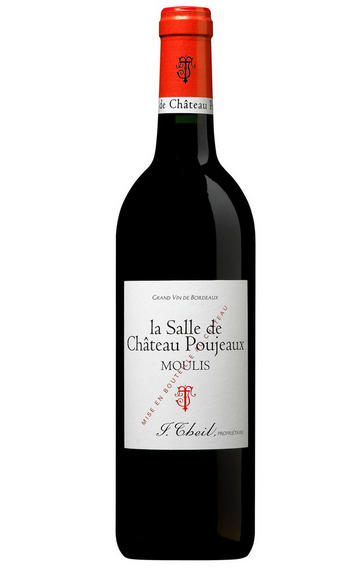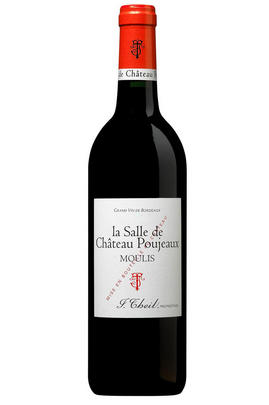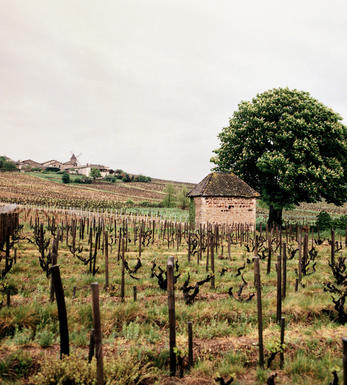
2010 Château Poujeaux, Moulis-en-Médoc, Bordeaux

Critics reviews
Robert M. Parker, Jr. - 28/02/2013
Jancis Robinson MW- jancis robinson.com 13 Apr 2011
James Molesworth – The Wine Spectator – Apr 2011
Very close in quality to the brilliant 2009, this wine is the superstar of the appellation of Moulis. The estate is now owned by the Cuvelier family, who have overseen a major turn-around in quality at the famous St.-Emilion classified growth of Clos Fourtet. They have gotten this large vineyard of nearly 180 acres into top form as well. The vineyard is under the direction and management of two of the brilliant consultants of Bordeaux, Stephane Derenoncourt and Nicolas Thienpont, and they are doing a terrific job. The good news for consumers is that there are approximately 300,000 bottles of this brilliant wine from Moulis, which still sells at a fair price.
90 Robert Parker - Wine Advocate - Feb 2013
An undeniable sleeper of the vintage, this may be the finest Poujeaux I have tasted in three decades. A crushed rock/mineral character is intertwined with abundant black currant, blackberry, incense and camphor notes in this full-bodied, unctuously textured, elegant, pure effort. It is capable of lasting 15 years. Kudos to new proprietor Philippe Cuvelier (also the owner of St.-Emilion’s Clos Fourtet) for resurrecting this well-known estate.
90-92 Robert Parker- Wine Advocate- May 2011
About this WINE

Chateau Poujeaux
Château Poujeaux is a leading Cru Bourgeois property that consistently produces wines of Grand Cru Classé quality. Poujeaux is located in the commune of Moulis and can trace its history back to the 16th century. It has been owned and run since 1921 by the Theil family and today it is brothers Philippe and François who are at the helm.
Poujeaux's 52-hectare vineyard is located in a single plot on a well-sited gravel ridge just outside the village of Poujeaux. The wine is a blend of Cabernet Sauvignon (50%), Merlot (40%), Cabernet Franc (5%) and Petit Verdot (5%).
The legendary 1953 Poujeaux was famously mistaken by Baron Rothschild for Lafite, and remains the finest wine the property has ever produced. Poujeaux wines are typically deeply coloured, wonderfully perfumed on the nose and display a seductive, creamy texture with densely concentrated cassis fruits on the palate.

Moulis
This is the smallest of the six Médoc communes but boasts a wide variety of soils and terroirs. Moulis is one of the two communal appellations located on the Atlantic side of the Médoc. It is positioned directly south of Listrac and even though it adjoins Margaux - the Médoc appellation with the highest number of Cru Classé châteaux - there are none here.
In the context of the Médoc, Moulis is hilly country, studded with a diversity of gravels, limestone and clay. These are sturdy wines, but the best are capable of considerable longevity and are often seductively perfumed. Generally they have more power than Margaux wines, albeit with less finesse and elegance.
Recommended Châteaux: Ch. Chasse-Spleen, Ch. Poujeaux, Ch. Maucaillou.

Cabernet Sauvignon Blend
Cabernet Sauvignon lends itself particularly well in blends with Merlot. This is actually the archetypal Bordeaux blend, though in different proportions in the sub-regions and sometimes topped up with Cabernet Franc, Malbec, and Petit Verdot.
In the Médoc and Graves the percentage of Cabernet Sauvignon in the blend can range from 95% (Mouton-Rothschild) to as low as 40%. It is particularly suited to the dry, warm, free- draining, gravel-rich soils and is responsible for the redolent cassis characteristics as well as the depth of colour, tannic structure and pronounced acidity of Médoc wines. However 100% Cabernet Sauvignon wines can be slightly hollow-tasting in the middle palate and Merlot with its generous, fleshy fruit flavours acts as a perfect foil by filling in this cavity.
In St-Emilion and Pomerol, the blends are Merlot dominated as Cabernet Sauvignon can struggle to ripen there - when it is included, it adds structure and body to the wine. Sassicaia is the most famous Bordeaux blend in Italy and has spawned many imitations, whereby the blend is now firmly established in the New World and particularly in California and Australia.


Buying options
Add to wishlist
Description
Last year this was one of our absolute favorites, not only as a brilliant wine in its own right, but it was also stunning value. Wait for it…..2010 is even better! A tad more concentrated, a smidge more blackberry fruit in the creamy blackberry compote centre, and an even sexier, longer finish. I’m not sure what the charismatic Nicola Thienpont of Pavie Macquin fame has done over the river in Moulis with this lovely wine but I’m ecstatic he has. A must buy!
(55% Cabernet Sauvignon, 40% Merlot, 5% Petit Verdot)
Simon Staples, Fine Wine Director
wine at a glance
Delivery and quality guarantee